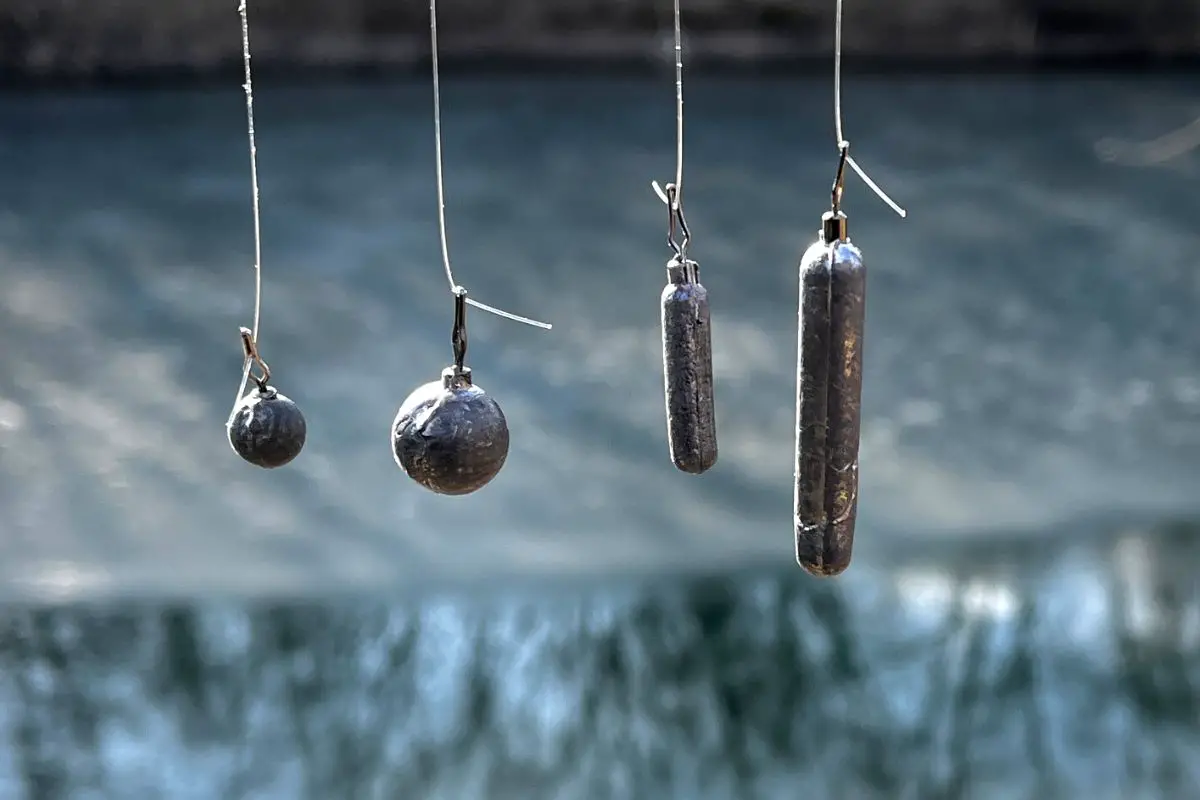While anglers can have success with most drop shot weights, understanding the best situations for each style and size will increase angler catch rates.
Cylinder-style drop shot weights are best suited for waters with vegetation. Both teardrop and round weights work well with a rocky lake bed. Weights ¼ oz or smaller are standard, but heavier weights for power-shotting is an efficient way to catch bass in deeper water.
Making simple adjustments to your drop shot weight selection can have a direct impact on the number of bass you catch.
Drop Shot Weights for Fishing Around Vegetation
The weight that you use when fishing around standing vegetation can make a huge difference in the efficiency of your presentation.
Cylinder drop shot weights, or pencil weights, slide through tall grass with ease. The slender design keeps the weight from grabbing and collecting vegetation. It took me several years to make the switch to cylinder weights when fishing grass, but I am so glad I did.
I was shocked at the difference it made.

I even filmed some underwater videos testing the amount of green stuff each style of weight would grab or get hung up on. Time-and-time again, the cylinder weights remained the cleanest
This design will work through grass whether vertical fishing a drop shot or casting it out and working it back to you. When fishing lakes or rivers with grass, this is a drop shot weight you will want to have.
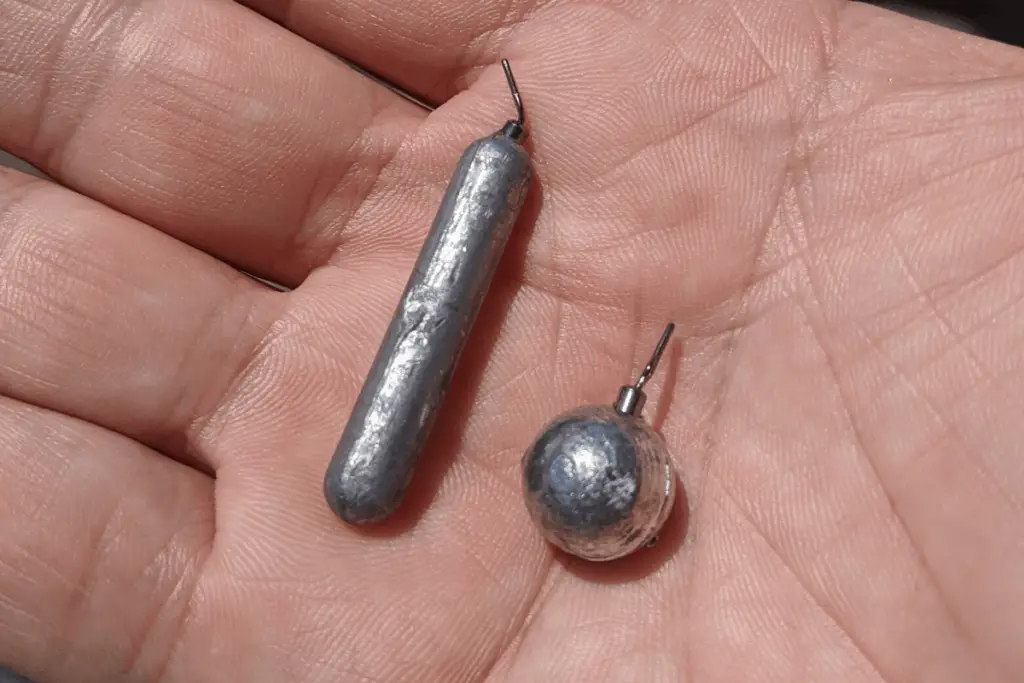
Best Drop Shot Weights for Rocky Lake and River Beds
The above-mentioned cylinder weights are not good for fishing around rocks. In this situation, the more traditional teardrop or spherical weights are a better choice.
The wider diameter of these two designs helps keep the weight from wedging tight into cracks and crevices around the rocks. While it does still happen, it is less likely.
The narrow profile of the cylinder weights can slip into the smallest spaces and breaking off is the result.
I am a fan of the teardrop style but have had much success with the traditional round drop shot weight as well.
The wider base of these also telegraphs information back to the angler better than a thinner weight. While the lure itself is not on the bottom, knowing what the bottom composition is helps us identify what the bass are relating to. Good weight-to-bottom contact is how we learn this information.
(Here is an article on drop shot leader length and the role it plays.)
Tungsten Drop Shot Weights and When to Use Them
When fishing around lakes and rivers that have a hard or rocky bottom composition, tungsten is an excellent choice.
While tungsten products are more expensive than traditional lead weights, the information they relay to the angler is impressive.
Tungsten is a dense metal.
It is easier to feel what the drop shot weight is working through. Gravel feels distinctly different from sand or other size rock. When we know where the bass are sitting because the denser metal makes it clear, we are more likely to have repeated success.
Products made from tungsten can also maintain a reasonable size profile, yet still, be dense enough to get the job done. For example, there was a time when terminal tackle manufacturers started to make weights out of steel.
Steel is not nearly as dense as tungsten which meant a ¼ oz worm weight made from steel was much larger than the same weight made from lead. Tungsten weights are similar in size to what anglers are used to seeing with their lead tackle.
The “clicking” sound that the weight makes while bouncing into the hard bottom is also noticed by the fish. While the lateral lines on bass may not pick up vibration from a huge distance, these amazing features are very sensitive and can help dial in the location of potential prey when close to the weights. And a tungsten weight bouncing through rocks puts off a different vibration signature than lead.
As more-and-more locations ban the use of lead, our only options as anglers may soon be tungsten or steel anyway.
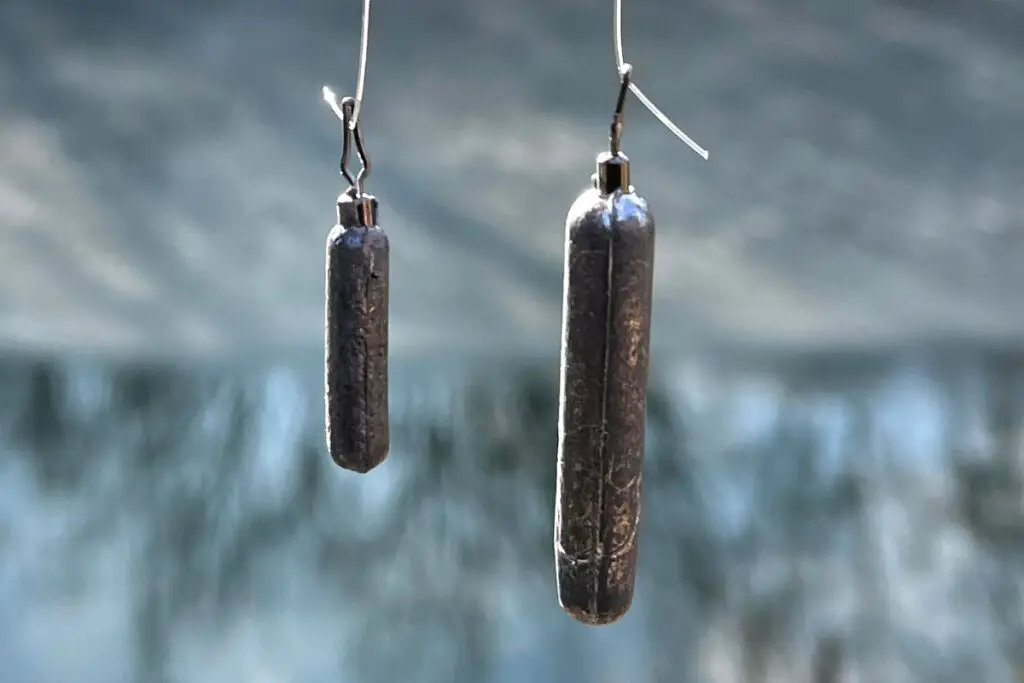
Power-Shot Fishing and How Weight Selection Matters
You may-or-may not have heard about power shot fishing.
It is literally the same as drop shot fishing, but we deliberately use heavier weights. When I want to power shot I may tie on drop shot weights as heavy as ½ oz.
There are two main reasons for wanting to power-shot.
First, it allows anglers to cover a lot more water. It takes a technique that is geared toward targeting specific locations or areas and gives anglers the chance to use it more like a search bait.
When power-shot fishing, I can cover a lot of distance quickly and make much longer casts.
The second reason anglers will power shot is to get the lure to depth quicker. If the bass are not eating the soft plastic on the drop, then there is no reason to wait for the lure to get to the right depth.
This is a perfect time to use a heavier drop shot weight – especially if fishing deeper water.
Most of the time I use a power shot setup instead of the traditional drop shot weight selection.
Attaching Drop Shot Weights to the Line
Most drop shot weights come with the standard quick slip line tie. This means anglers can thread the line through the eye of the weight and then pull it into place.
This is fast and still allows the weight to slide off the line when a serious snag occurs. The thought process is that the angler doesn’t need to retie the entire rig.
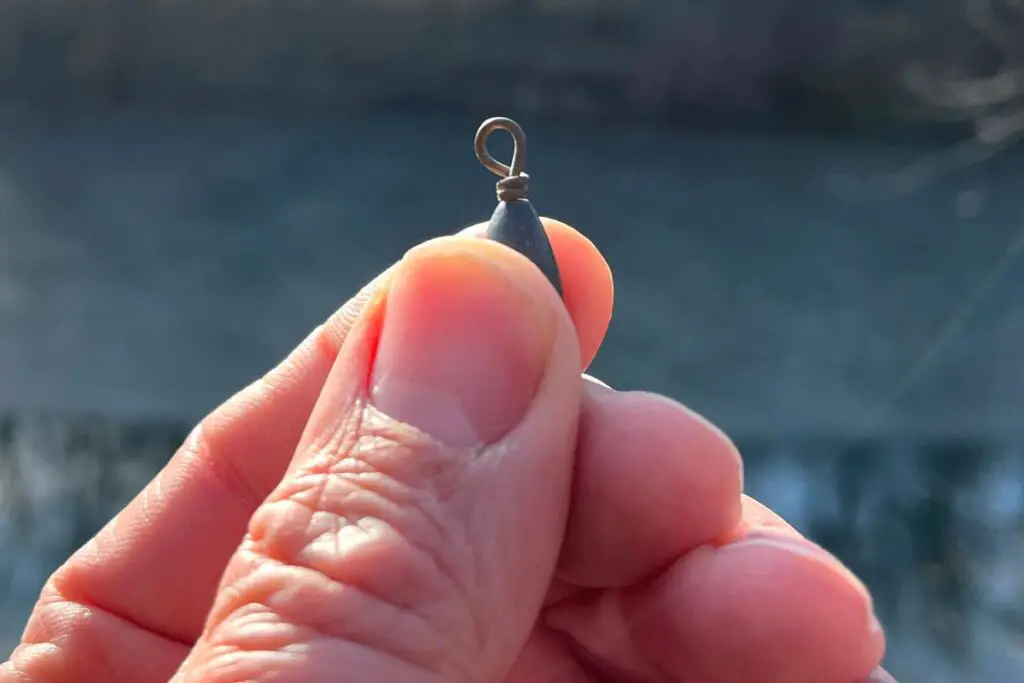
When fishing lakes with vegetation the chance of snagging into rocks is less likely. This is when I prefer to use a loop line tie instead. When the weight gets occasionally snagged in the grass I can still force it to pop free and not lose an expensive tungsten weight in the process.
Anglers that drop shot a lot in river systems with significant current also tend to prefer the loop line tie.
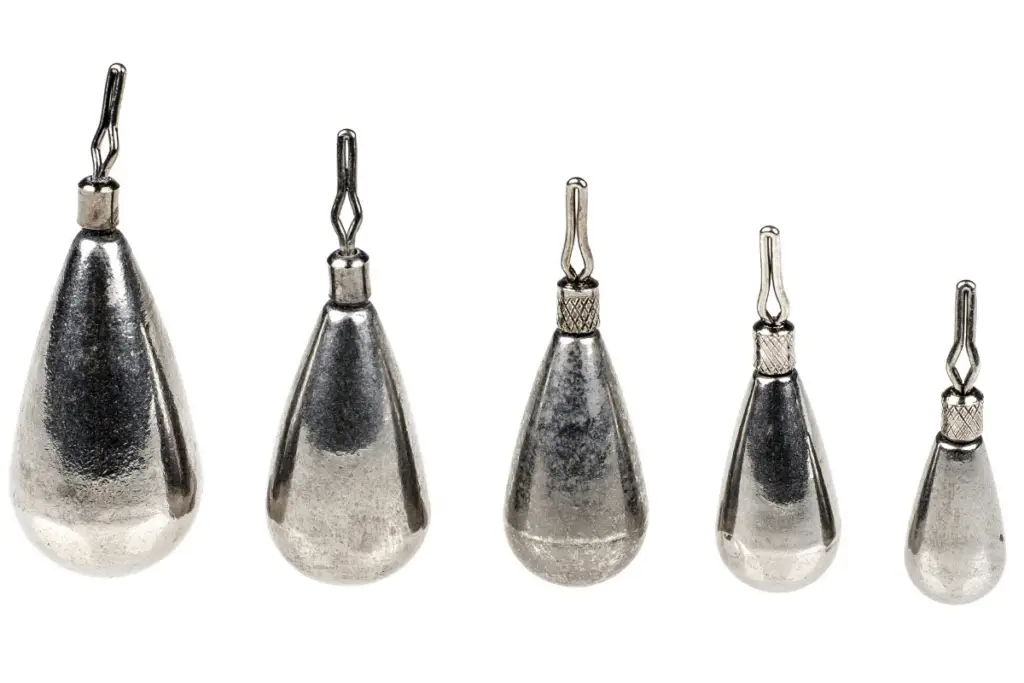
When Smaller Drop Shot Weights are Preferred
There are times when very light drop shot weights are quite beneficial.
If you get on the water and you notice that the bass are hitting your lure on the drop, then light weights are most likely going to play a part.
The fish may want a slow fall that mimics dying baitfish. When I decipher that this is the type of bite going on, that means I most often start with a weight that is ⅛ oz.
When fishing clear water, the bass may react to that lure flashing by them over a slow sink. Experiment with the weight size in the clear water and how they hit it while dropping.
Good luck and be sure to encourage someone today. You never know how you may change their life forever.
Isaiah 6:8

